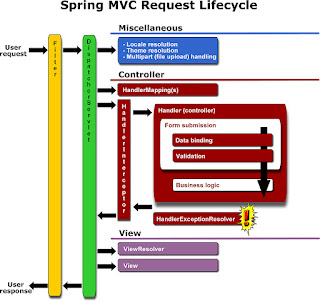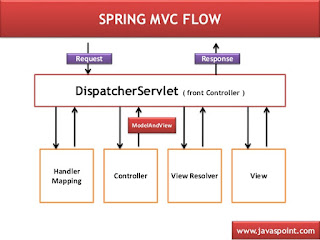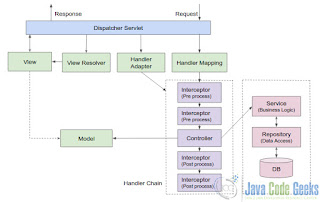Servicios básicos de AWS:
Amazon EC2
Amazon Elastic Compute
Cloud (Amazon EC2) is a web service that provides resizable compute
capacity in the cloud. It is designed to make web-scale
cloud computing
easier for
developers.
Amazon
CloudWatch
is a monitoring service for AWS cloud resources
and the applications you run on AWS. You can use Amazon CloudWatch
to collect and track metrics, collect and monitor log files, set
alarms, and automatically react to changes in your AWS resources.
Amazon CloudWatch can monitor AWS resources such as Amazon EC2
instances, Amazon DynamoDB tables, and Amazon RDS DB instances, as
well as custom metrics generated by your applications and services,
and any log files your applications generate. You can use Amazon
CloudWatch to gain system-wide visibility into resource
utilization, application performance, and operational health. You
can use these insights to react and keep your application running
smoothly.
Elastic
Load Balancing
Elastic Load Balancing
automatically distributes your incoming application traffic across
multiple targets, such as EC2 instances. It monitors the health of
registered targets and routes traffic only to the healthy targets.
Elastic Load Balancing supports two types of load balancers:
Application Load Balancers and Classic Load
Balancers.
El producto Elastic Load Balancing tiene 2 posibilidades de uso:
- Classic Load Balancer
- Application Load Balancer (es la opción que es mas versátil)
Amazon S3
Amazon Simple Storage
Service (Amazon S3), provides developers and IT teams with secure,
durable, highly-scalable cloud
storage.
Amazon RDS
Amazon Relational
Database Service (Amazon RDS) makes it easy to set up, operate, and
scale a relational database
in the cloud.
It provides cost-efficient and resizable capacity while managing
time-consuming database administration tasks, freeing you up to
focus on your applications and business. Amazon RDS provides you
six familiar database engines to choose from,
including Amazon
Aurora,
PostgreSQL,
MySQL,
MariaDB,
Oracle,
and Microsoft SQL
Server.
Amazon Aurora
is a MySQL and
PostgreSQL-compatible relational database built for the cloud, that
combines the performance and availability of traditional enterprise
databases with the simplicity and cost-effectiveness of open source
databases.
Amazon
DynamoDB
is a fast
and flexible NoSQL database
service for
all applications that need consistent, single-digit millisecond
latency at any scale.
Amazon SQS Amazon Simple Queue Service (SQS) is a fast, reliable, scalable, fully managed message queuing service.
Amazon
CloudFront
is a global Content
Delivery Network (CDN) service that accelerates delivery of your
websites, APIs, video content or other web assets. It integrates
with other Amazon Web Services products to give developers and
businesses an easy way to accelerate content to end users with no
minimum usage commitments. It is a fast content delivery
network (CDN) service that securely delivers data, videos,
applications, and APIs to customers globally with low latency, high
transfer speeds, all within a developer-friendly
environment.
Amazon API
Gateway
Amazon API Gateway is a fully
managed service that makes it easy for developers to create,
publish, maintain, monitor, and secure APIs at any scale. With a
few clicks in the AWS Management Console, you can create an API
that acts as a “front door” for applications to access data,
business logic, or functionality from your back-end services, such
as workloads running on Amazon Elastic Compute Cloud (Amazon EC2),
code running on AWS Lambda, or any Web
application.
--- 2020:
Amazon Kinesis Data Firehose
is the easiest way to reliably
load streaming data into data lakes, data stores, and analytics
tools. It can capture, transform, and load streaming data into
Amazon S3, Amazon Redshift, Amazon Elasticsearch Service, and
Splunk, enabling near real-time analytics with existing business
intelligence tools and dashboards you’re already using
today.
AWS CloudFormation
provides a common
language for you to model and provision AWS and third-party
application resources in your cloud environment. AWS CloudFormation
allows you to use programming languages or a simple text file to
model and provision, in an automated and secure manner, all the
resources needed for your applications across all regions and
accounts. This gives you a single source of truth for your AWS and
third-party resources.
AWS Fargate
is a serverless compute engine
for containers that works with both Amazon Elastic Container Service (ECS) and Amazon Elastic Kubernetes Service (EKS).
Fargate makes it easy for you to focus on building your
applications. Fargate removes the need to provision and manage
servers, lets you specify and pay for resources per application,
and improves security through application isolation by
design.
Amazon ECS - Elastic Container Service
Amazon Elastic Container Service (Amazon ECS) is a fully managed container orchestration service. Customers such as Duolingo, Samsung, GE, and Cookpad use ECS to run their most sensitive and mission critical applications because of its security, reliability, and scalability.
ECS is a great choice to run containers for several reasons (container orchestration services). First, you can choose to run your ECS clusters using AWS Fargate, which is serverless compute for containers. Fargate removes the need to provision and manage servers, lets you specify and pay for resources per application, and improves security through application isolation by design. Second, ECS is used extensively within Amazon to power services such as Amazon SageMaker, AWS Batch, Amazon Lex, and Amazon.com’s recommendation engine, ensuring ECS is tested extensively for security, reliability, and availability.
Amazon ECR - Elastic Container Registry
Easily store, manage, and deploy container images
Amazon Elastic Container Registry (ECR) is a fully-managed Docker container registry that makes it easy for developers to store, manage, and deploy Docker container images. Amazon ECR is integrated with Amazon Elastic Container Service (ECS), simplifying your development to production workflow. Amazon ECR eliminates the need to operate your own container repositories or worry about scaling the underlying infrastructure. Amazon ECR hosts your images in a highly available and scalable architecture, allowing you to reliably deploy containers for your applications.
AWS IoT Core
is a managed cloud service that
lets connected devices easily and securely interact with cloud
applications and other devices.
AWS Secrets Manager
helps you protect secrets needed
to access your applications, services, and IT resources
AWS Secrets Manager
is a secrets management service that helps you protect access to
your applications, services, and IT resources. This service enables
you to easily rotate, manage, and retrieve database credentials,
API keys, and other secrets throughout their lifecycle.
Amazon Kinesis Data Streams
enables you to build custom
applications that process or analyze streaming data for specialized
needs. You can continuously add various types of data such as
clickstreams, application logs, and social media to an Amazon
Kinesis data stream from hundreds of thousands of sources. Within
seconds, the data will be available for your Amazon Kinesis
Applications to read and process from the
stream.
Amazon Cognito
provides authentication,
authorization, and user management for your web and mobile apps.
Your users can sign in directly with a user name and password, or
through a third party such as Facebook, Amazon, Google or
Apple.
(The
/oauth2/token endpoint gets the user's
tokens.)
https://aws.amazon.com/blogs/security/how-to-add-authentication-single-page-web-application-with-amazon-cognito-oauth2-implementation/
With Amazon Cognito, you can easily add user sign-up, sign-in, and data synchronization to serverless applications. Amazon Cognito user pools provide built-in sign-in screens and federation with Facebook, Google, Amazon, and Security Assertion Markup Language (SAML). Amazon Cognito Federated Identities lets you securely provide scoped access to AWS resources that are part of your serverless architecture.
Amazon Athena
is an interactive query service that makes it easy to analyze data in Amazon S3 using standard SQL. Athena is serverless, so there is no infrastructure to manage, and you pay only for the queries that you run.
Amazon Macie
is a security service that uses machine learning to automatically discover, classify, and protect sensitive data in AWS. Amazon Macie recognizes sensitive data such as Personally Identifiable Information (PII) or intellectual property and provides you with dashboards and alerts that give visibility into how this data is being accessed or moved.
Amazon EMR
An Amazon EMR release is a set
of open-source applications from the big-data ecosystem. Each
release comprises different big-data applications, components, and
features that you select to have Amazon EMR install and configure
when you create a cluster. Applications are packaged using a system
based on Apache BigTop, which is an open-source project associated
with the Hadoop ecosystem. This guide provides information for
applications included in Amazon EMR releases.
(Hadoop, Spark, Sqoop). Presto is a fast SQL query engine (~Hive) designed for
interactive analytic queries over large datasets from multiple
sources.
AWS Glue
is a fully managed extract,
transform, and load (ETL) service that makes it easy for customers
to prepare and load their data for analytics. You can create and
run an ETL job with a few clicks in the AWS Management
Console. (Data Lake = (job, crawler)).
AWS SQS
Amazon Simple Queue Service (SQS) is a fully managed message queuing service that enables you to decouple and scale microservices, distributed systems, and serverless applications. SQS eliminates the complexity and overhead associated with managing and operating message-oriented middleware, and empowers developers to focus on differentiating work. Using SQS, you can send, store, and receive messages between software components at any volume, without losing messages or requiring other services to be available.
Amazon Simple Workflow Service (SWF)
helps developers build, run, and scale background jobs that have parallel or sequential steps. You can think of Amazon SWF as a fully-managed state tracker and task coordinator in the Cloud.
Amazon MSK
Amazon Managed Streaming for Apache Kafka is a fully managed service, highly available, and secure Apache Kafka service that makes it easy for you to build and run applications that use Apache Kafka to process streaming data.
AWS Cloud Map
is a cloud resource discovery service. With Cloud Map, you can define custom names for your application resources, and it maintains the updated location of these dynamically changing resources. This increases your application availability because your web service always discovers the most up-to-date locations of its resources.
Amazon Elasticsearch Service
is a fully managed service that makes it easy for you to deploy, secure, and run Elasticsearch cost-effectively at scale. You can build, monitor, and troubleshoot your applications using the tools you love, at the scale you need. The service provides support for open-source Elasticsearch APIs, managed Kibana, integration with Logstash and other AWS services, and built-in alerting and SQL querying. Amazon Elasticsearch Service lets you pay only for what you use – there are no upfront costs or usage requirements. With Amazon Elasticsearch Service, you get the ELK stack you need, without the operational overhead.
Amazon Elastic Transcoder
is media transcoding in the cloud. It is designed to be a highly scalable, easy to use and a cost-effective way for developers and businesses to convert (or “transcode”) media files from their source format into versions that will playback on devices like smartphones, tablets, and PCs.
AWS Lambda
lets you run code without provisioning or managing servers. You pay only for the compute time you consume.
With Lambda, you can run code for virtually any type of application or backend service - all with zero administration. Not everything can be triggered by lambdas (i.e.: RDS).
AWS X-Ray
helps developers analyze and debug production, distributed applications, such as those built using a microservices architecture. With X-Ray, you can understand how your application and its underlying services are performing to identify and troubleshoot the root cause of performance issues and errors. X-Ray provides an end-to-end view of requests as they travel through your application, and shows a map of your application’s underlying components.
Amazon ElastiCache
allows you to seamlessly set up, run, and scale popular open-Source compatible in-memory data stores in the cloud. Build data-intensive apps or boost the performance of your existing databases by retrieving data from high throughput and low latency in-memory data stores. Amazon ElastiCache is a popular choice for real-time use cases like Caching, Session Stores, Gaming, Geospatial Services, Real-Time Analytics, and Queuing.
Amazon ElastiCache offers fully managed Redis and Memcached for your most demanding applications that require sub-millisecond response times.
Amazon EC2 C5 instances
are the next generation of the Amazon EC2 Compute Optimized instance family. C5 instances offer the lowest price per vCPU in the Amazon EC2 family and are ideal for running advanced compute-intensive workloads. This includes workloads such as high-performance web servers, high-performance computing (HPC), batch processing, ad serving, highly scalable multiplayer gaming, video encoding, scientific modeling, distributed analytics and machine/deep learning inference.
NAT Gateways
You can use a network address translation (NAT) gateway to enable instances in a private subnet to connect to the internet or other AWS services, but prevent the internet from initiating a connection with those instances.
AWS EventBridge
Amazon EventBridge allows you to route events between AWS services, integrated software as a service (SaaS) applications, and your own applications. Event producers publish events onto an event bus, which uses rules to determine where to send those events. The rules can specify one or more targets, which can be other AWS services or Lambda functions. This model makes it easy to develop scalable, distributed serverless applications by handling event routing and filtering.
AWS WAF - Web Application Firewall
AWS WAF is a web application firewall that helps protect your web applications or APIs against common web exploits that may affect availability, compromise security, or consume excessive resources. AWS WAF gives you control over how traffic reaches your applications by enabling you to create security rules that block common attack patterns, such as SQL injection or cross-site scripting, and rules that filter out specific traffic patterns you define. You can get started quickly using Managed Rules for AWS WAF, a pre-configured set of rules managed by AWS or AWS Marketplace Sellers. The Managed Rules for WAF address issues like the OWASP Top 10 security risks. These rules are regularly updated as new issues emerge. AWS WAF includes a full-featured API that you can use to automate the creation, deployment, and maintenance of security rules.
2021 ----
AWS Batch
has limit of 20 job queue. Before you can submit jobs in AWS Batch, you must create a job queue. When you create a job queue, you associate one or more compute environments to the queue and assign an order of preference for the compute environments.
You also set a priority to the job queue that determines the order in which the AWS Batch scheduler places jobs onto its associated compute environments. For example, if a compute environment is associated with more than one job queue, the job queue with a higher priority is given preference for scheduling jobs to that compute environment.
AWS Landing Zone
This solution is delivered by AWS Solutions Architects or Professional Services consultants to create a customized "baseline" of AWS accounts, networks, and security policies.
ACM
AWS Certificate Manager is a service that lets you easily provision, manage, and deploy public and private Secure Sockets Layer/Transport Layer Security (SSL/TLS) certificates for use with AWS services and your internal connected resources. SSL/TLS certificates are used to secure network communications and establish the identity of websites over the Internet as well as resources on private networks. AWS Certificate Manager removes the time-consuming manual process of purchasing, uploading, and renewing SSL/
AWS VPN
AWS Virtual Private Network solutions establish secure connections between your on-premises networks, remote offices, client devices, and the AWS global network. AWS VPN is comprised of two services: AWS Site-to-Site VPN and AWS Client VPN. Together, they deliver a highly-available, managed, and elastic cloud VPN solution to protect your network traffic.
AWS Direct Connect
enables you to securely connect your AWS environment to your on-premises data center or office location over a standard 1 gigabit or 10 gigabit Ethernet fiber-optic connection.
- AWS Transfer Family
- Amazon Glacier
- AWS Redshift
- AWS QuickSight
- AWS SNS
- AWS Cloudtrail
- Amazon GuarDuty
- AWS Config
- AWS trusted Advisor
AWS EKS - Amazon Elastic Kubernetes Service
gives you the flexibility to start, run, and scale Kubernetes applications in the AWS cloud or on-premises. Amazon EKS helps you provide highly-available and secure clusters and automates key tasks such as patching, node provisioning, and updates. (EKS = Managing Kubernetes cluster on AWS infrastructure).


















